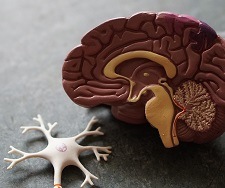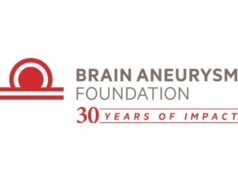 Researchers at the RIKEN Center for Brain Science (CBS) in Wako, Japan have discovered a set of related mutations that lead to intracranial aneurysms. The mutations all appear to act on the same biological signalling pathway, and—writing in the journal Science Translational Medicine—the researchers have also reported the “first ever” pharmaceutical treatment in a mouse model, which works by blocking this signal.
Researchers at the RIKEN Center for Brain Science (CBS) in Wako, Japan have discovered a set of related mutations that lead to intracranial aneurysms. The mutations all appear to act on the same biological signalling pathway, and—writing in the journal Science Translational Medicine—the researchers have also reported the “first ever” pharmaceutical treatment in a mouse model, which works by blocking this signal.
Finding non-surgical options for the treatment of intracranial aneurysms is described in a RIKEN CBS press release as a “high priority”, and research into the origin of these types of aneurysms has led the RIKEN CBS team to one such potential treatment.
Intracranial aneurysms come in two types—intracranial fusiform aneurysms (IFAs) and intracranial saccular aneurysms (ISAs), with about 90% being the latter variety. And, while previous research has reported mutations in IFA arteries, the origins of the more common ISA type remain unclear, the press release continues.
To address this, the RIKEN team sequenced the entire exomes—all protein-encoding pieces of DNA—in cells that made up 65 aneurysmal arteries and 24 normal arteries. Along with subsequent deep-targeted sequencing, they found that six genes were common among IFAs and ISAs, and never appeared in non-aneurysmal arteries, while 10 others appeared only in either IFAs or ISAs.
While several factors, such as age, hypertension, and alcohol consumption, increase the risk of intracranial aneurysms, project leader Hirofumi Nakatomi (RIKEN CBS, Wako, Japan) noted that “the unexpected finding that greater than 90% of aneurysms had mutations in a common set of 16 genes indicates that somatic mutation could be the major trigger in most cases”.
Further testing showed that mutations to all six of the genes common to IFAs and ISAs triggered the same nuclear factor kappa B (NF-κB) biological signalling pathway. The researchers’ next step was to learn more about the mutations and try to block the abnormal signalling. First, they showed that mutations to one of the six genes, PDGDRB, could be traced along different layers within samples of human aneurysms. Then, after linking the PDGDRB mutation with faster cell migration and inflammation in cultured cells, they discovered that these effects could be blocked with sunitinib—a drug that prevents the changes to PDGDRB that allow signalling.
Next, the researchers created a mouse model of an intracranial aneurysm by using an adenovirus to insert mutant PDGFRB into the basilar artery at the base of the brain. After a month, the size of the artery had doubled in diameter and become very weak. As in the cultured cells, the effect of the mutant gene was blocked when the mice were given sunitinib; their basilar arteries remained normal sized and strong.
“Establishing the first non-surgical animal model of intracranial aneurysm is, in itself, an achievement,” said Nakatomi, “but, more importantly, we suppressed artery expansion with a drug, indicating that intracranial aneurysms can be pharmacologically treated.”
Additional research will be required to demonstrate that this kind of drug treatment is effective for human patients. But, perhaps—as Nakatomi explained—the more difficult hurdle will be detection.
“Unruptured intracranial aneurysms are usually detected by magnetic resonance angiography [MRA] or computed tomography angiography [CTA] during health check-ups,” he stated. “If these tests are not available, then aneurysms are undetectable until they burst.”
In Japan, where this research was conducted, many people can receive these tests as part of their annual health check-up, making the development of drug treatments “particularly useful”, the RIKEN CBS press release concludes.












